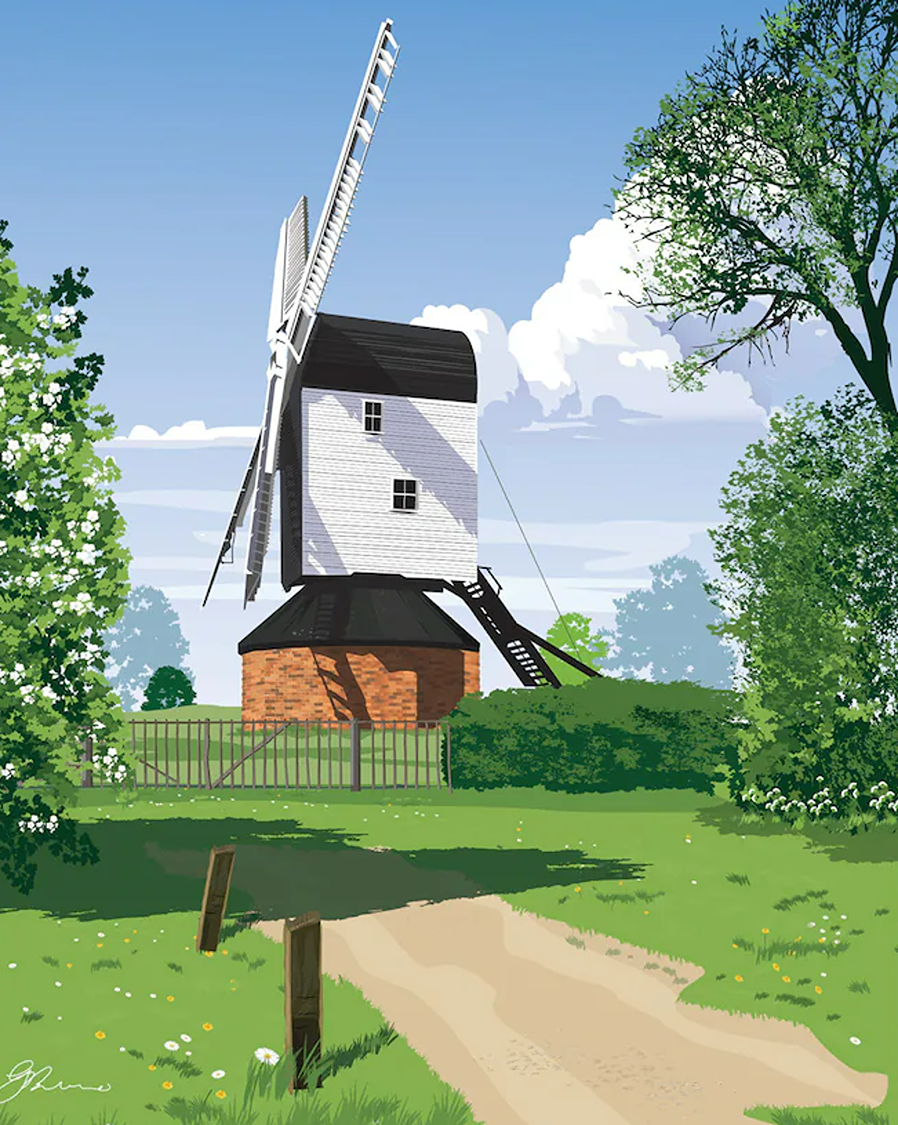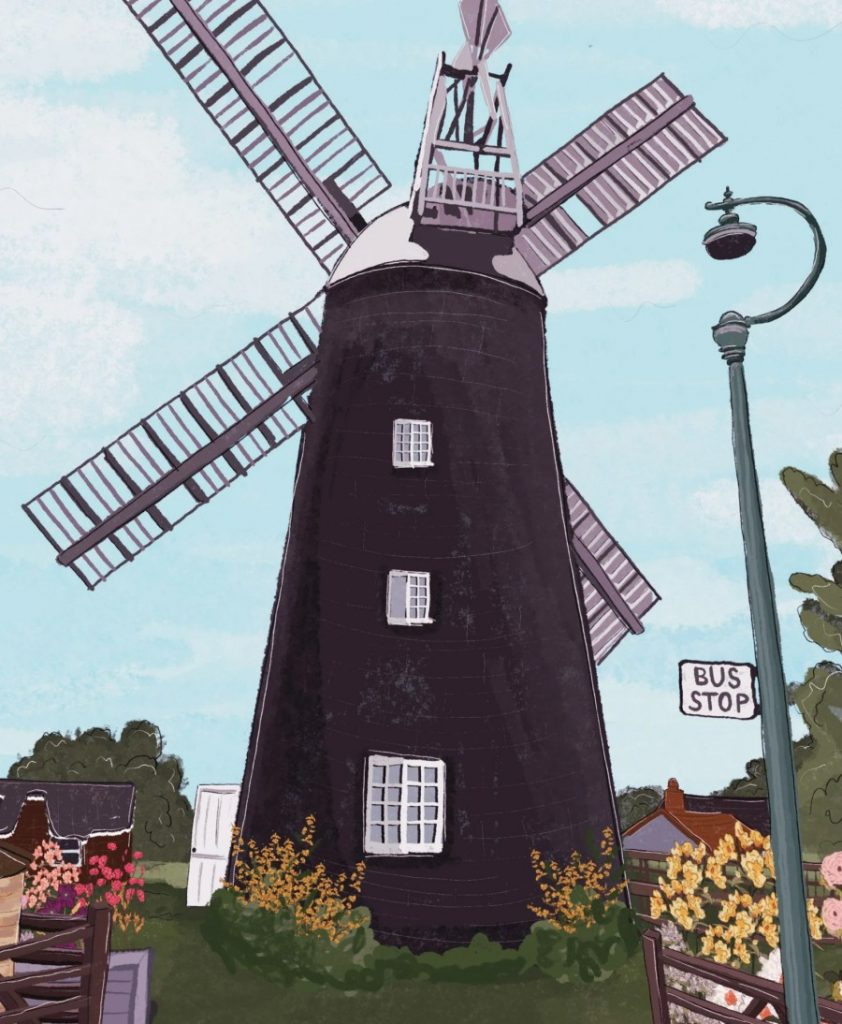
England used to be full of windmills, but not so much now. Previously used to generate water energy and grind grains for artisan flours, today most have been turned into holiday homes (good to preserve them, but a bit sad too). Most windmills are found in Eastern England, and the areas look quite like The Netherlands with marshy fenlands and sails flapping in the wind.

Many cylindrical buildings are windmills, simply with the sails long gone. In 1834, one Sunderland man was tragically killed when the sails flung him off the building, as he tried to repair a weatherboard in a terrible storm.
Some interesting windmills still in existence include:
Pitsone Windmill (Buckinghamshire) is a good example of a post mill, the earliest type of European windmill supported by a single post on which it revolves, to face the wind.
Chesterton Windmill (Warwickshire) is a unique listed building that has stood on a hill overlooking the village for over 350 years. It’s a cylindrical stone tower with an arched base.
Maud Foster Windmill (Lincolnshire) is a five-sail and 7-storey windmill in Boston, at 80 foot tall. The granary next door is a Grade 1 listed building.
Upminster Windmill (London) is a Grade II listed building in the borough of Havering. It used to be in Essex but was moved and restored, and now operates as a museum.
Heckington Windmill (Lincolnshire) is the only 8-sail windmill left in England. It even has its sails intact. Located between Boston and Sleaford.
Stembridge Tower Mill (Somerset) is the last thatched windmill. It’s also a Grade II listed building.
wonderful windmills in The Netherlands
There are around 1200 windmills in The Netherlands, and the country looks after them well. If only as they are massive tourist attractions that brings in a lot of income.
Schiedam windmills are near Rotterdam and were build to produce gin, not flour! As The Netherlands is so flat, these mills were built tall to catch enough wind to make them work! There are still seven left today.
You can even visit the small village of Kinderdijk that has 19 windmills (with just a few hundred people). Dating from the 1740s, they were built to help drainage and protect against flooding, a huge issue here due to the flat land. These windmills are now a World Heritage Site and you can cycle right past them.






